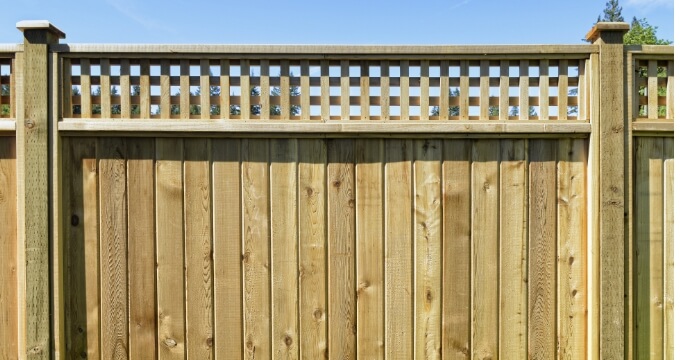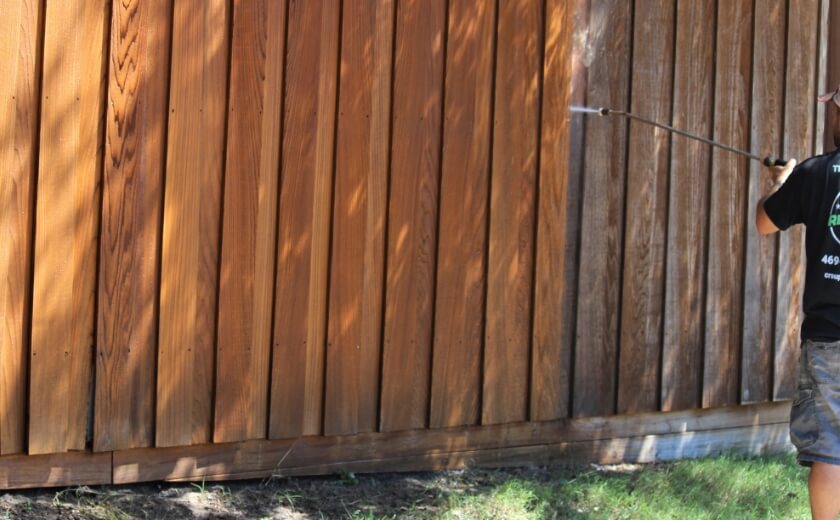Cleaning fence panels with a pressure washer
A pressure washer works well for wood fence cleaning, but don’t have the settings too high as you could damage the wood. Begin by rinsing the wood, then hold the pressure washer about eight inches from the fence surface, starting further out and working your way in as needed.
Fill your pressure washer with a suitable fungicidal wash or mould and mildew cleaner (follow instructions on the product to see how much water needs to be added) and apply to the same rinsed boards. Spray in long, even strokes, making sure to take care around interwoven or overlapping fence panels.
Grab a scrubbing brush to tackle mould, mildew stains, tree sap, and other stubborn or troublesome spots. Use circular motions to buff the dirt away. Allow the cleaner to sit on the surface for at least three to five minutes, so it has time to take effect. Make sure it isn’t dry before rinsing – this is why colder, non-windy conditions are ideal for fence cleaning.
Flush out any remaining detergent from your pressure washer and check for any visible grime and mould that might be left. Use your pressure washer or a garden hose with the spray nozzle setting to rinse the fence with fresh water, washing from the top down in small sections to avoid unsightly streaks. When the entire fence is spotless, allow it to air dry.
Once clean and completely dry, you can apply a wood fencing treatment for extra protection from the outside elements by following the steps outlined earlier.
Cleaning fence panels without a pressure washer
You can of course clean panels without access to a pressure washer. Use a suitable fence cleaner, and fill a bucket with the diluted cleaning solution. Use a scrubbing brush to scrub a few boards at a time. Be liberal with your scrubbing but not too aggressive, as this could damage the wood.
Allow a minimum of three to five minutes for the cleaner to work. After this time, you can give the fence another scrub if it’s heavily soiled, but remember not to let the solution dry before rinsing off.
Rinse the fence with fresh water – a garden hose at low pressure is the most practical tool for this part. You can then add additional treatment to help prevent deterioration. In between cleaning and treating a fence is also the optimum time to make any necessary repairs.
Time to replace the garden fence?
Cleaning and maintaining a fence regularly can add years to its lifespan. However, the cost and hassle of doing this means it’s not always worth it, especially if the fence panels or posts show signs of rot, are discoloured or have become unstable. If this is the case, replace them with new ones to avoid fencing problems that will make maintenance methods a bit pointless.
Take a look at fence care and maintenance products here, and use them to protect your customers’ garden fencing so they can enjoy their outside space for many years.
















